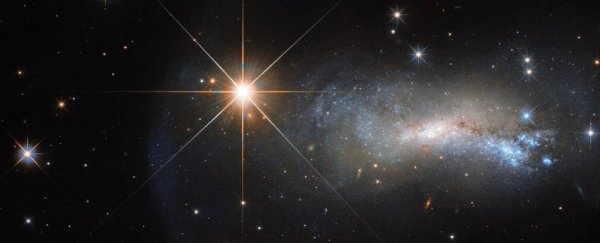Fast radio bursts (FRBs) are super intense, millisecond-long bursts of radio waves produced by unidentified sources in the distant cosmos.
Their discovery in 2007 by American astronomer Duncan Lorimer led to the term 'Lorimer Bursts'. Since then just a few dozen similar events have been observed in data collected by radio telescopes around the world, building evidence that points to a variety of potential causes.
Only a handful of emissions have been traced to specific areas of the sky, most indicating sources in other galaxies.
In 2020, a source within the Milky Way - most likely belonging to a type of neutron star called a magnetar - was confirmed to be a fast radio burst emitter.
The flash of radio waves is incredibly bright, if distant, comparable to the power released by hundreds of millions of suns in just a few milliseconds. This intensity suggests powerful objects like black holes and neutron stars could be involved, with highly dense bodies such as magnetars and pulsars as likely culprits.
The events were once considered to be largely transient – they seemed to happen once, without obvious signs of a repeat emission. In fact, it was only in 2016 that astronomers found any evidence of multiple bursts from the same source.
A number of 'repeaters' have been identified since then, with some researchers venturing that many, if not all FRB sources could routinely emit bursts in sequences too difficult to detect using current instruments. This hypothesis was supported when scientists reported in 2020 discovery that a FRB observed three years previously had since repeated faintly on two more recent occasions.
Shortly after this report, astronomers with the Canadian Hydrogen Intensity Mapping Experiment (CHIME) Collaboration published findings of the first FRB we know of that's repeating in a distinct pattern. The FRB has a predictable pattern of hourly activity over the course of four days, followed by 12 days of quiet.
With much still to learn about FRBs, their mechanism is one of the biggest mysteries in modern astronomy.
All topic-based articles are determined by fact checkers to be correct and relevant at the time of publishing. Text and images may be altered, removed, or added to as an editorial decision to keep information current.
